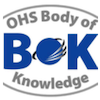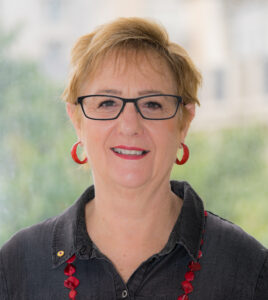Chapter 39.1: The OHS professional as a ‘critical consumer’ of research
Abstract
Occupational health and safety (OHS) practices should be informed by high-quality, up-to-date evidence. To support this, OHS professionals need to be critical consumers of research literature. This chapter explains how to be such a critical consumer by outlining five principles of evidence-based practice. These principles – adapted from discussions of evidence-based practice in professions such as medicine, nursing and teaching – provide guidance for critically appraising and applying research evidence. The chapter includes theoretical discussion about the role and limits of empirical research evidence in OHS practice as well as practical guidance for OHS professionals with vital information for enhancing OHS practice and maintaining professional credibility.
Keywords: OHS, occupational health and safety, evidence-based practice, evidence-informed, critical appraisal, professional, practice, research, critical consumer
First year of publication: 2012
Current Version 2023
Chapter 39.1: The OHS professional as a ‘critical consumer’ of research
Table of contents
| 1 | Introduction |
| 2 | What is a critical consumer of OHS research |
| 3 | Evidence-based practice principles for OHS |
| 3.1 | Decisions informed by the best available evidence |
| 3.2 | Transparency about the quality of evidence informing decisions |
| 3.3 | Understanding causes, including mechanisms of interventions |
| 3.4 | Evidence interpreted in light of the context in which it will be applied |
| 3.5 | Evaluation of evidence as community practice |
| 4 | How to be a critical consumer of OHS research |
| 4.1 | Asking questions of research |
| 4.2 | Locating research evidence |
| 4.3 | Evaluating evidence |
| 5 | Enhancing OHS practice with research evidence |
| 5.1 | Referencing the evidence base |
| 5.2 | Discussing OHS theory |
| 6 | Summary |
| References |
Andrew Rae BE(CompSys), PhD, PGCAP, FHEA
Associate Professor, Griffith University
Drew is Associate Professor in the Safety Science Innovation Lab at Griffith University, where he teaches courses on safety engineering and supervises early-career researchers. Drew’s research brings a critical cross-disciplinary approach to the examination of myths, rituals and bad habits that surround safety practice. His recent publications challenge the common assumption that risk assessments and incident investigations lead to safer work. He suggests alternatives based on a better understanding of constraints that prevent safe innovation and resources that support successful work. Dre is co-host of The Safety of Work podcast and serves on the editorial board of the journal Safety Science.
Anne Statham BBus, MBusCom, PhD, ASA
Manager, OHS Body of Knowledge Development, Australian Institute of Health and Safety
Anne is a researcher, writer, editor and knowledge broker. She has worked for public and private sector clients in OHS, scientific, business, higher education and public policy domains, and is the author of two books. She was previously Principal, Institutional Research & Strategy, at Queensland University of Technology.
Pam Pryor AO BSc, BEd, GDOHM, MAppSci, ChOHSP, FAIHS
Manager, OHS Body of Knowledge Development, Australian Institute of Health and Safety
With a background in OHS consulting and OHS education, Pam now specialises in OHS capability and related aspects of OHS professionality. Pam was a key player in the development of the INSHPO OHS Professional Capability Framework and received the 2017-18 President’s Award from the American Society of Safety Professionals for this work. Pam received recognition as an Officer of the Order of Australia in 2018 for her contribution to OHS through leadership and advisory roles, particular in developing standards for educational frameworks.
Learning Outcomes: Model of OHS Practice
The OHS Body of Knowledge takes a conceptual approach which enables it to be applied in different contexts and frameworks.
To optimise its value for education and professional development learning outcomes have been developed for each technical chapter in the Body of Knowledge.
The learning outcomes as described give an indication of what should be the capabilities of an OHS professional; it is up to those developing OHS education programs, OHS professionals planning their CPD or recruiters or employers selecting or developing people for the OHS function to consider the required breadth vs. depth .
Please read the section on using the learning outcomes before delving into the leaning outcomes of the individual chapters.
The numbers against each learning outcome refer to the chapter number of the BOK download page. No learning outcomes have been developed for the chapters considered introductory or underpinning knowledge (that is chapters 1, 2, 3, 4, 5, 6, 7, 1, .13, 14, 15.)
Podcast
Safety of Work Podcast: Ep 48: Are injury rates statistically invalid?
This podcast examines what it means when something isn’t peer-reviewed, why statistics are ever-popular, using a model that weighs underlying variables and randomness.
Date: 2020
Presenter: Drew Rae & David Provan
Source: https://safetyofwork.com/episodes/ep55-are-injury-rates-statistically-invalid
Safety of Work Podcast: Ep 49: what exactly is a peer-reviewed journal paper?
This podcast discusses peer reviewed journal papers, what they are and how they function. It explains academic journals, what makes a reputable journal, the peer-review process, journal shopping and its risks. It also gives advice on accessing journals in the Internet age.
Date: 2020
Presenter: Drew Rae & David Provan
Source: https://safetyofwork.com/episodes/ep49-what-exactly-is-a-peer-reviewed-journal-paper




